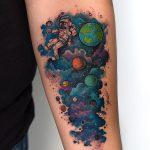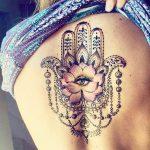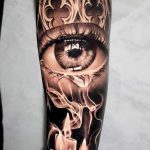A tattoo is a form of art that is made permanently on human body. As old body art, tattooing has been widely practiced worldwide in various cultures. For Polynesians, tattooing could be important rite of passage or symbol of social standing. In ancient China, piecing a mark on the body was a way to distinguish soldiers from civilians. Nevertheless, modern tattoos have evolved to embrace more artistic expressions. Not only the symbolic meanings, but also the placement and tattoo styles are among the considerations when getting a tattoo.
What is tattoo style
A tattoo style is the way how the tattoo artist portray and render the ink art. It suggests the manner of grouping similar tattoos into certain categories. For example, tribal tattoos and traditional Japanese tattoos undoubtedly fall into distinctive categories. As a form of visual art, tattoo is a a very powerful language to make a statement or convey meanings. It also employs the styles of other art forms for its artistic presentation. So that’s why we see replica of conventional art styles in the body art.
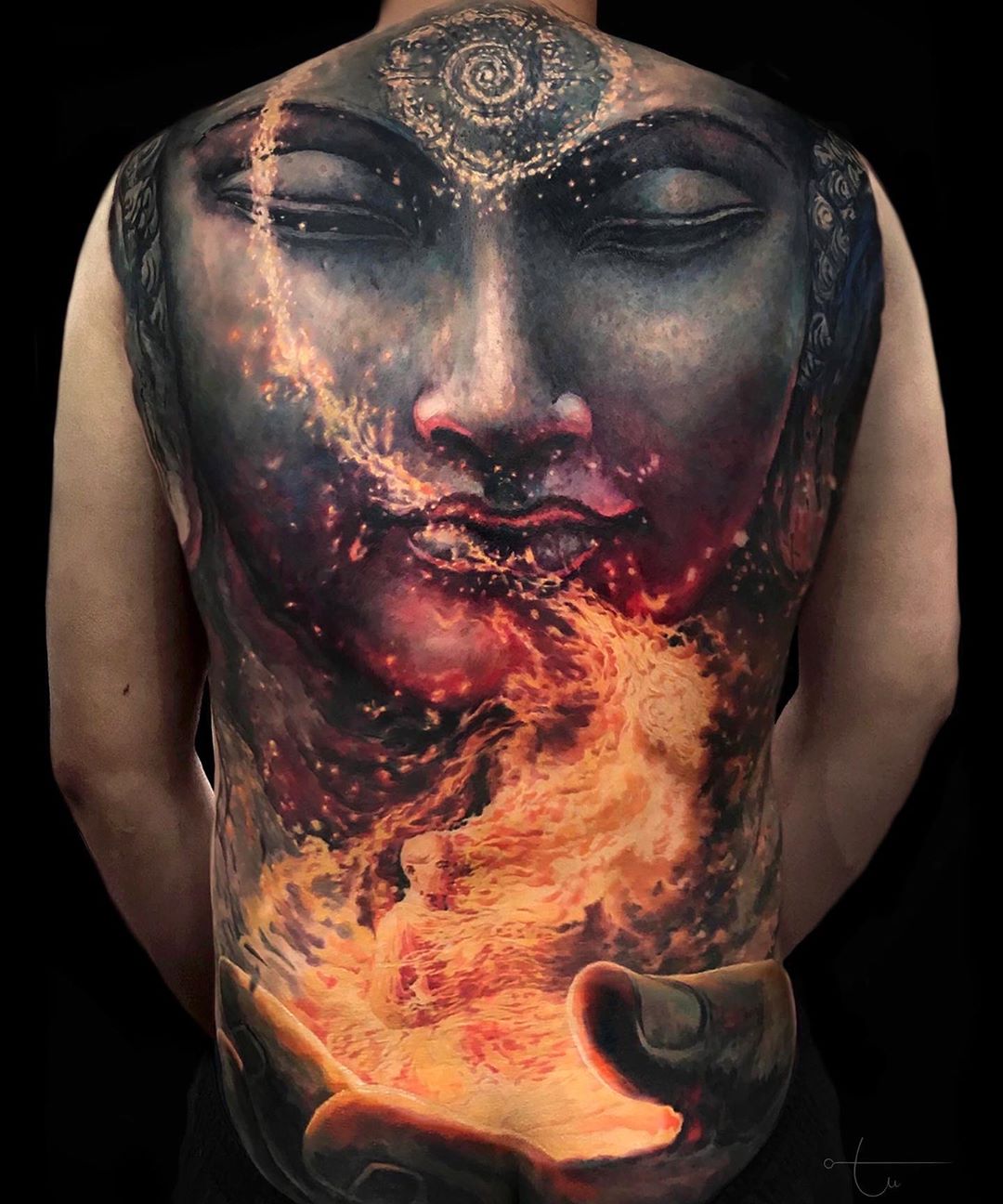
Source
The factors to determine the tattoo style can be conscious choice of the artist and clients or the medium or method that the artist uses. For example, watercolor and dotwork are examples of techniques that result in the unique styles. Of course, the style is also relevant to the skills, discipline and perception of the artist. In fact, the artist develops his own style over time either consciously or unconsciously.
In the 20th century, art experienced various art movements that were accompanied with specific styles and philosophy. With the timeline moving forward, the ink work still see the influence of their styles, such as abstract, surrealism. It’s always inspiring to read and appreciate the great artwork such as painting, drawing, photography, or other designs.
How do I choose my tattoo style
When you are new to get a tattoo, which kind of the tattoo style my tattoo will look like is certainly one of the important considerations. Instead of rushing into a decision in the tattoo shop, a good homework is always necessary. Here are some of the tips you may be aware when it comes to select a style.
- Pick a design – You can find your favorite tattoo designs on social media like Pinterest or Instagram. Ask yourself what makes you feel the style fits to your body. By taking into account the motif for the meaning, you will be certain of the best style for the design.
- Consider the shape and size – You may come across some of the amazing designs. But a tattoo looks good on others must not necessarily fits to everybody. It’s also worth having an assessment if my particular body part fits to design and style.
- Find an artist who is specialized in creating particular styles you have interest. It’s definitely crucial for your first tattoo dream.
Examples of Tattoo styles
So what are the different ink styles all about? We’ve gathered examples of the most popular tattoo styles. Whether you’re looking for inspiration, or you are confused with some of the concept, you may find this page helpful.
1. 3D style
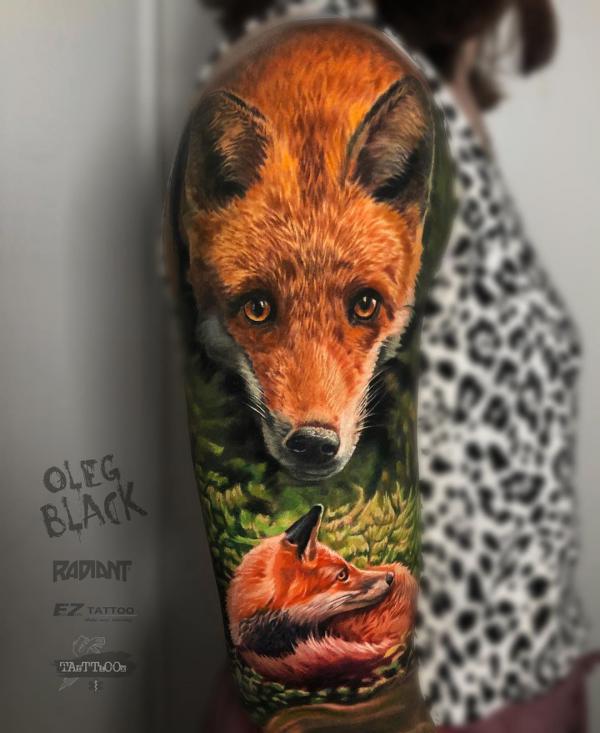
3D art is the term used for computer art, which means the work is produced by special software through precise calculation. In the art of tattooing, 3D tattoo refers to tattoos with photo-realistic style. However, the style is still 2-dimensional but gives optical illusion of 3-dimensional.
Source
2. Abstract
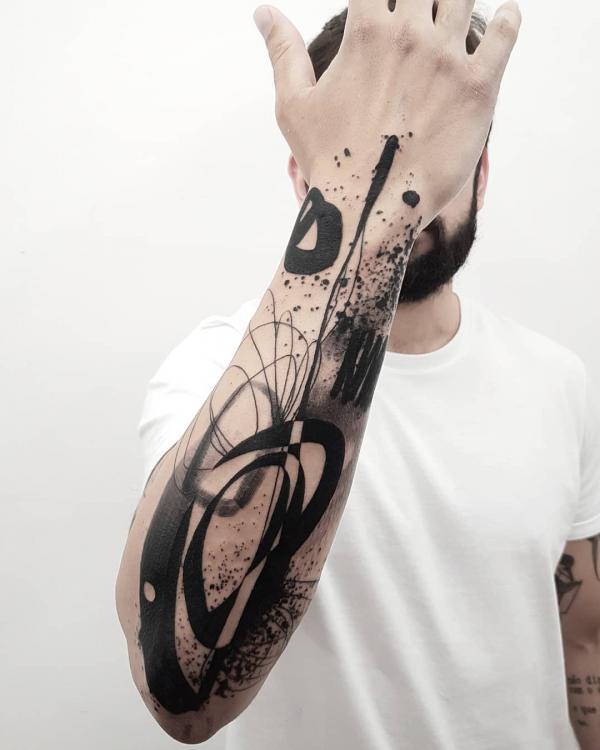
Abstract tattoos describe artistic ink creations without using visual references from real life. This style involves the application of sweeping brush strokes or bold geometric shapes to deals with contrasts and relation between visual elements.
Source
3. Blackwork
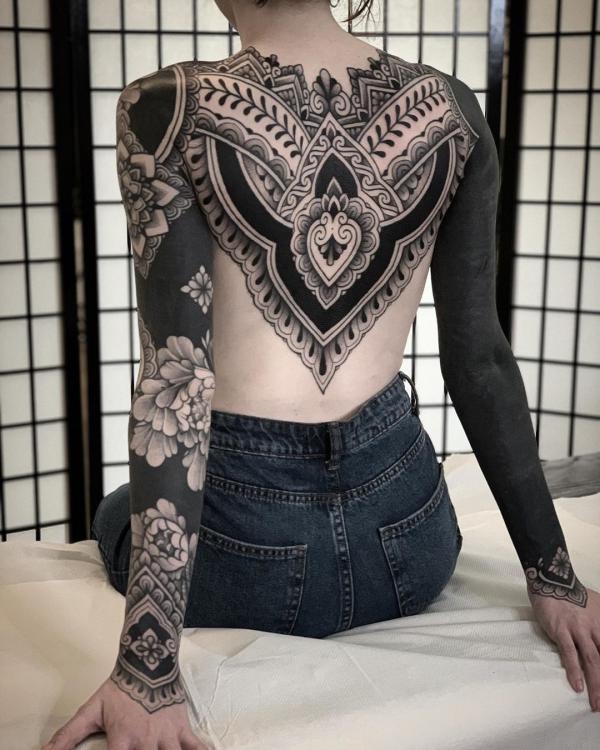
A blackwork tattoo refers to the stye of body art with bold black block of geometric shapes and lines. This style was originally seen in tribal tattoos which features Polynesian patterns. But it now incorporates elements from other art forms, such as abstract art, illustrative and graphic art, and even calligraphic scripts.
Source
4. Cubism
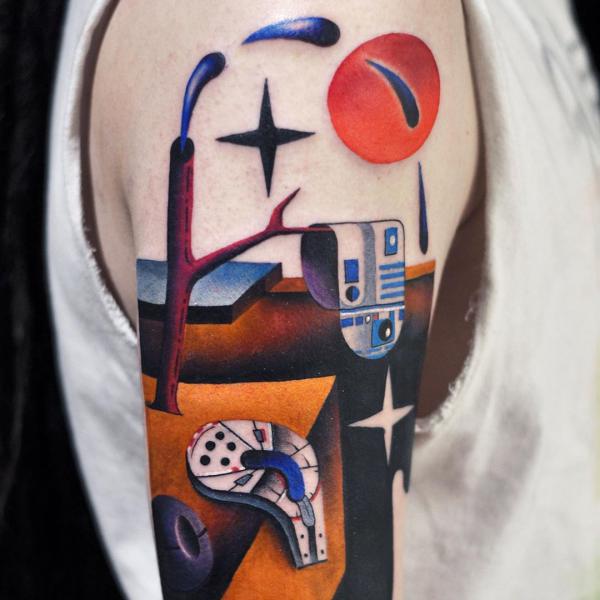
Cubism is the art movement created by Pablo Picasso and Georges Braque in the early of 20th century. The art style depicts geometric objects or figurative characters in the way of stylization and distortion, which inspires observations from different view.
Source
5. Dotwork
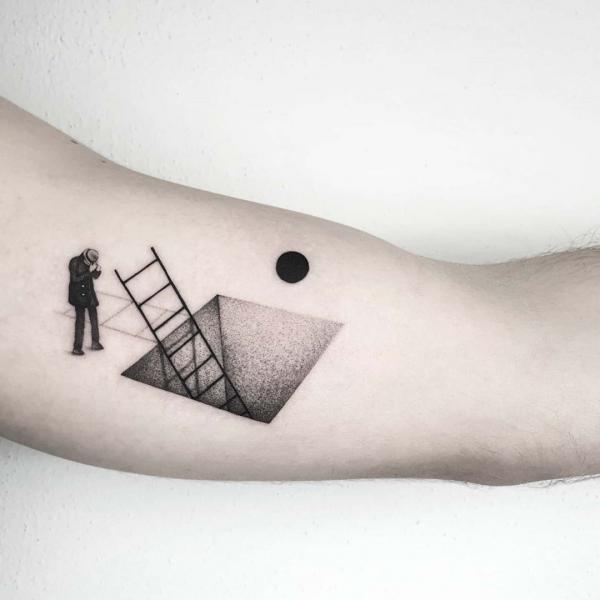
A Dotwork is the style of tattoo with images composed entirely of single dots. It is worth of mention that the technique creating stippling effect is also Dotwork, which uses black or grey ink, rotary machine and stitched needles. The dotwork is the modern representation of hand poking technique which does not use electric machine.
Source
6. Geometric
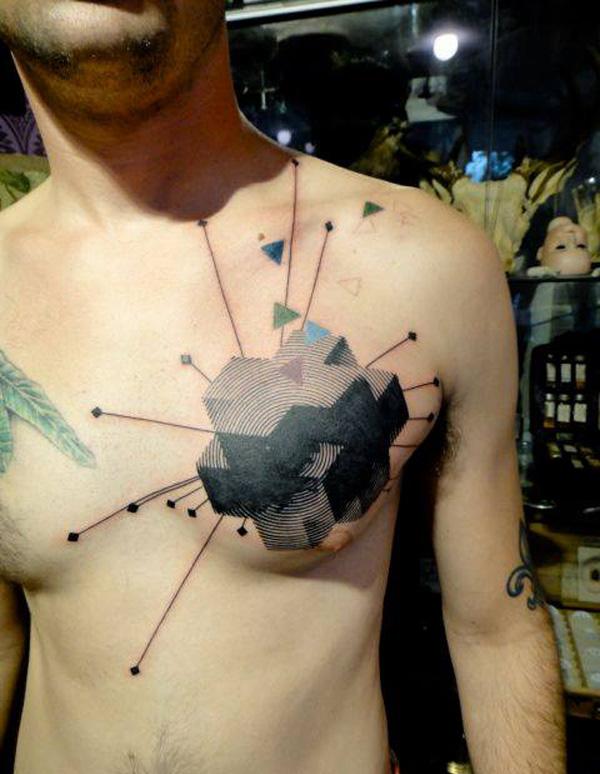
Geometric tattoos feature the math of shapes such as line, square, and circle. Sometimes, the composition is non-objective, creating abstract effect, for instance, line work. Sometimes, it forms exquisite patterns such as Mandala.
7. Grayscale
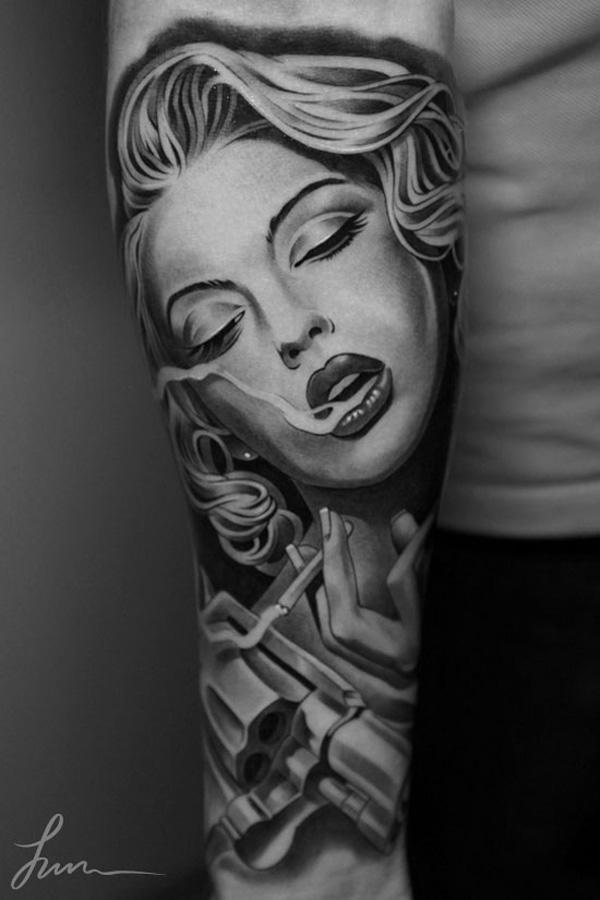
Grayscale means black and white, which refers to the category using the ink of black and gray colors, in illustrative or realistic style. The style becomes popular as the dark colors tend to be more durable compared with colorful ones.
8. Inverted
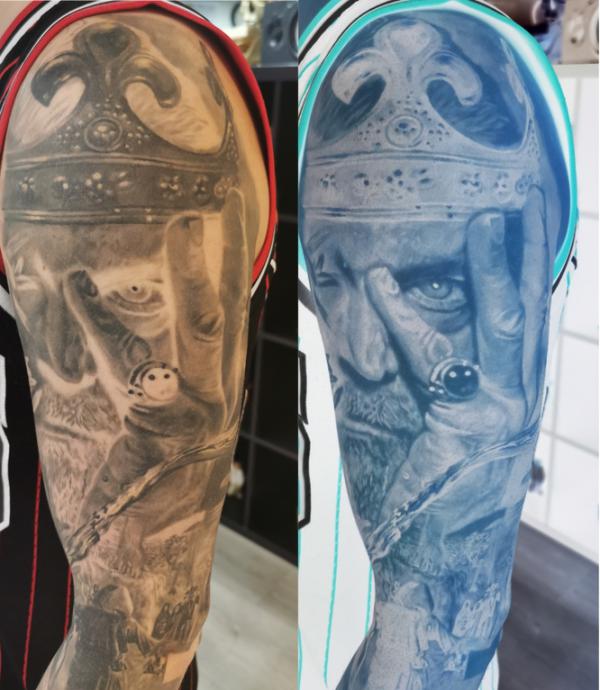
Inverted tattoo is also known as negative space tattoo. The negative is exactly how the image stores on film when you take a picture through a camera. When film is exposed to light, the areas that are supposed be light actually appear dark and dark areas appear light. Inverted tattoos mimick the effect of negative by reversing its colors into their respective complementary colors. Of course, you don’t have to calculate the opposite colors. In Photoshop, you can invert colors for any layers easily.
9. Japanese
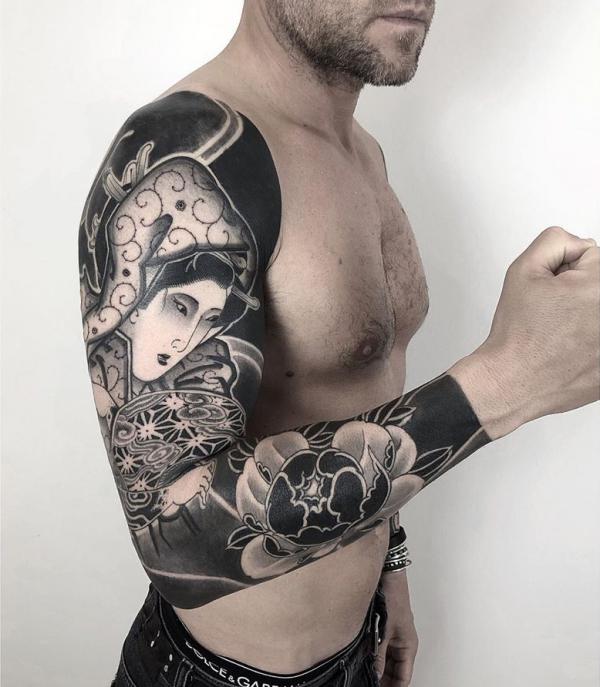
Traditional Japanese tattoo finds its popularity in the designs of modern body art. Tattoos of this style usually feature elements which are rich in Japanese culture, such as dragon, kio fish, wave, cloud and chrysanthemum.
Source
10. Neo-Traditional
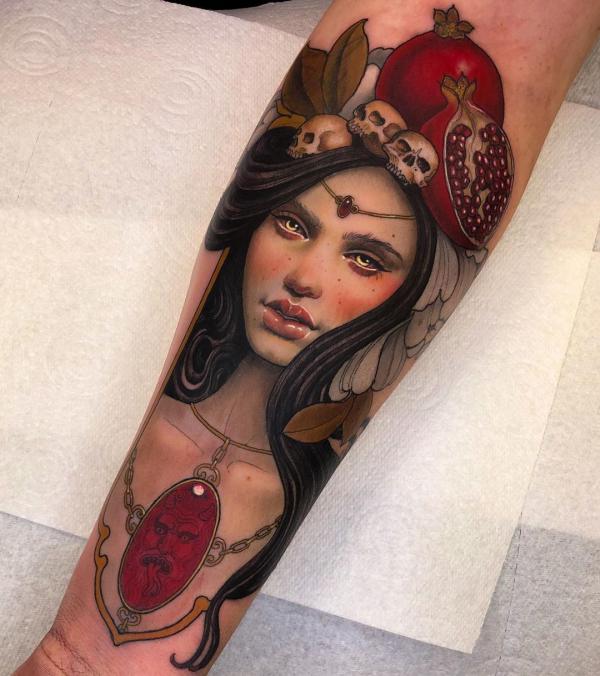
Neo Traditional is American traditional tattoo style that is distinctive from old school. Influenced by previous art movements such as Art Nouveau, Neo Traditional introduces modern style to the classic themes with striking hues, broader color palette and bold outlines. In contrast to old school, Neo-Traditional appears not “traditional” but realistic with lush details.
Source
11. New School
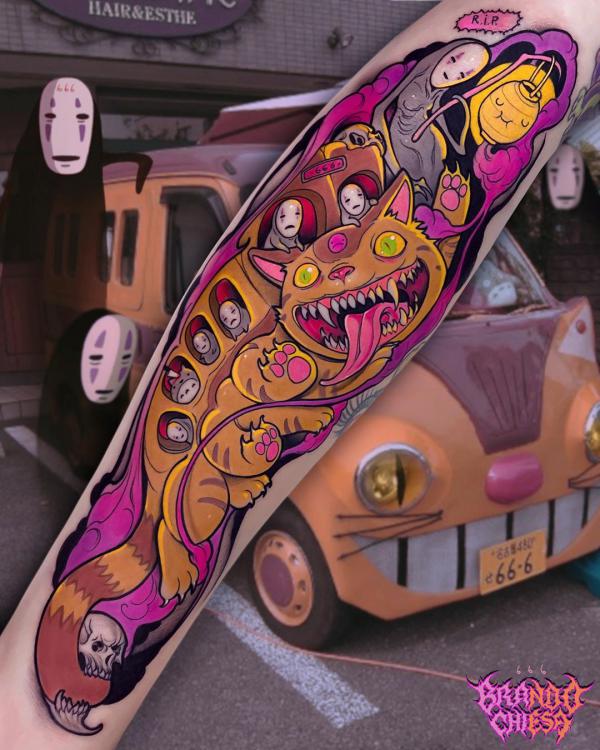
New school is a tattoo style originating on the West coast in the late 1970s and early 1980s when artists experimented to incorporate vivid colors and exaggerated imagery in tattoo design. Heavily influenced by cartoons, comic books and anime, New school reflects transition towards popular culture at that age. In contrast to old school style, new school also utilizes bold outlines but a wide range of colors.
Source
12. Old School
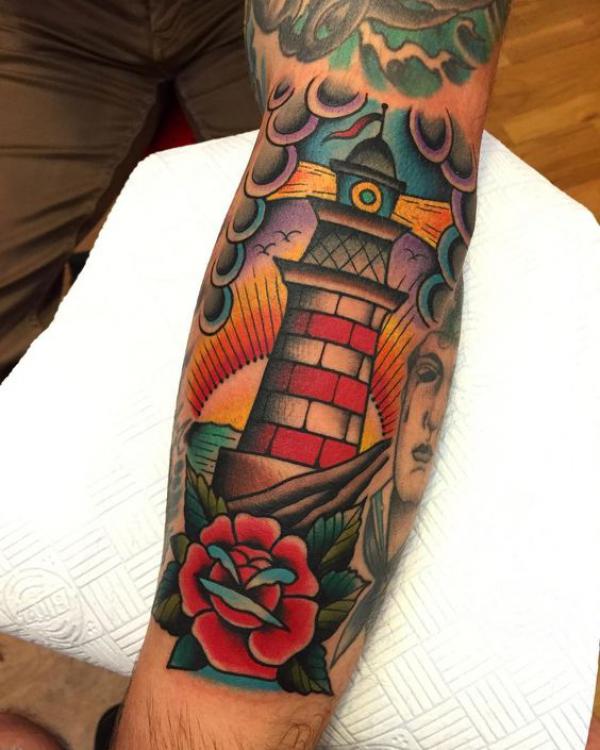
Old school style plays important role in American tattoo history. The classical style features bold black outlines. By focusing on a limited color palette such as yellow, red, green and black, American traditional tattoos leave plenty of nautical and war themed images. Anchor, swallow, pin-ups, nautical stars, shark, dragon, etc. are popular symbols in the old school style.
13. Polynesian
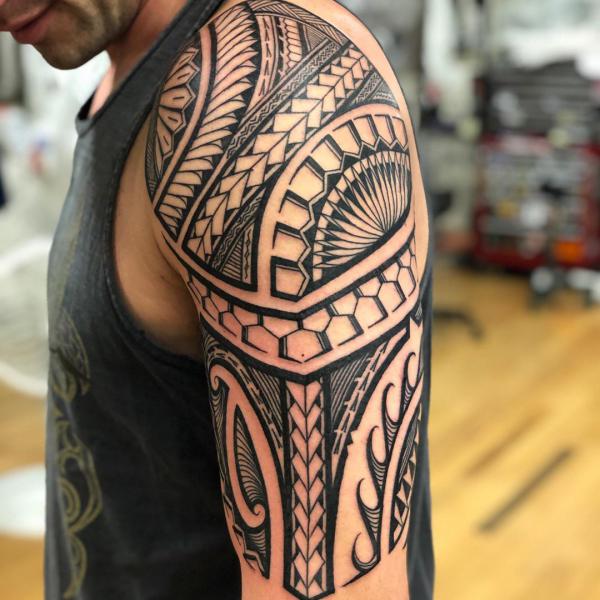
Polynesian Tattoo refers to traditional tattoo art practiced by indigenous Polynesian peoples. Despite the variations of styles in different islands, traditional Polynesian tattoos share similar motifs and visual effect. Polynesian Tattoo has great influence on modern tribal tattoo design.
Source
14. Realism
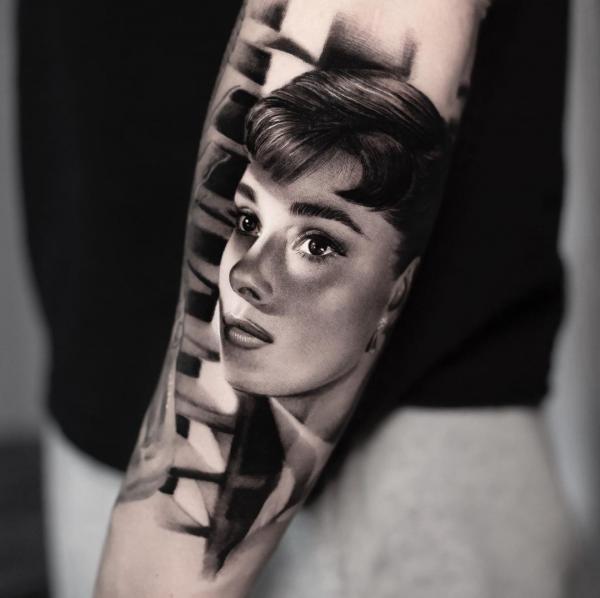
Realism is used to describe the tattoo that is created in a realistic or photographic manner. In contrast to surrealism or abstract, it is the precise and detailed depiction of visual appearances without stylization. It normally takes longer time for the artist to work on the subtle details.
Source
15. Silhouette
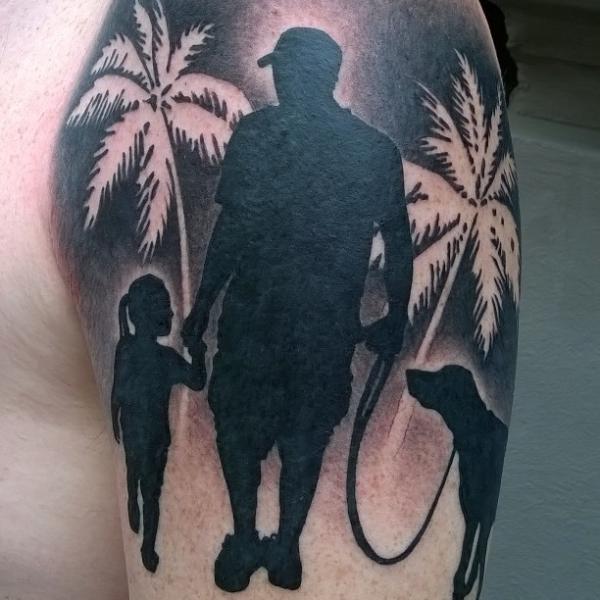
Silhouette refers to the style in which the motifs, such as animals, humans and symbols, are depicted as solid shape, usually in black color. On the contrary, the outline depicts the edge of an object in a linear form.
Source
16. Sketch
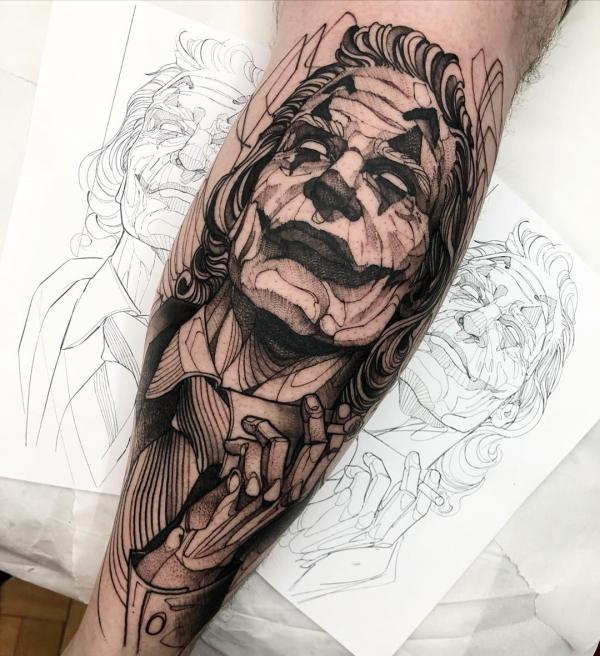
Sketch is the style in which the tattoo is rendered like freehand pencil drawing but not in realistic way. In visual art, the sketch is a quick method for artist to record or work out ideas. Sketch tattoos are usually in black and white with sophisticated line work.
Source
17. Steampunk
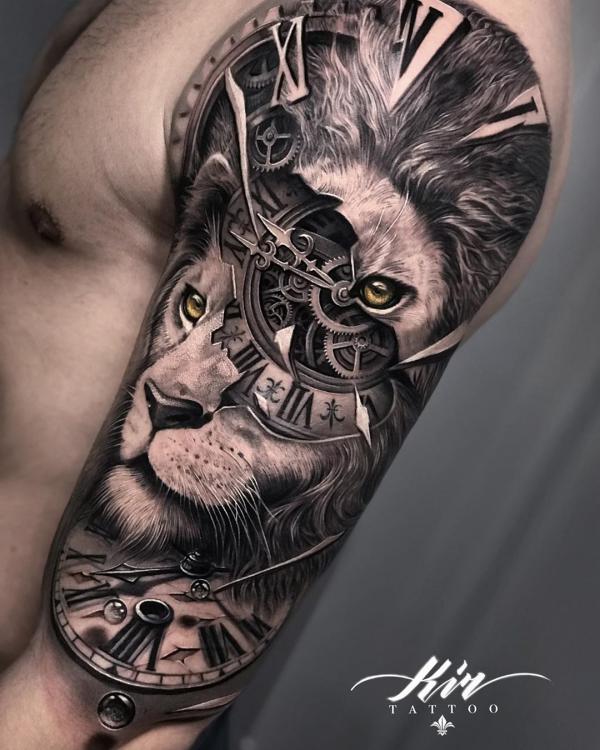
Steampunk is a style of tattoos that incorporates aesthetic imagery of mechanics such as clock, gears and robots, etc. People get steampunk tattoo to pay homage to the history of the 19th century British Victorian era. In some designs, the tattoos are depicted as if the bones and joints become mechanical parts. So the steampunk tattoo also has an alias biomechanical tattoo.
Source
18. Surrealism
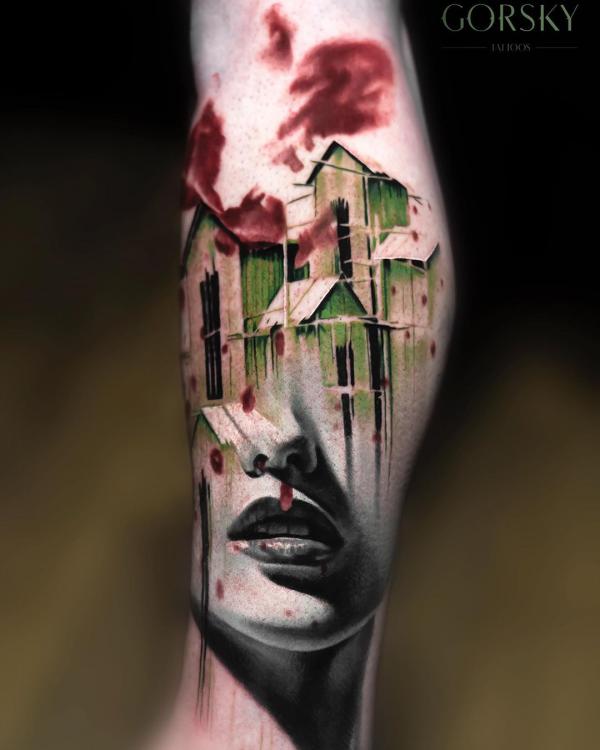
Surrealism is the artistic style that pursue release of one’s imagination of the unconscious mind. There are a lot of famous surrealist paintings out there. Surrealism tattoos are highly influenced by their styles.
Source
19. Trash Polka
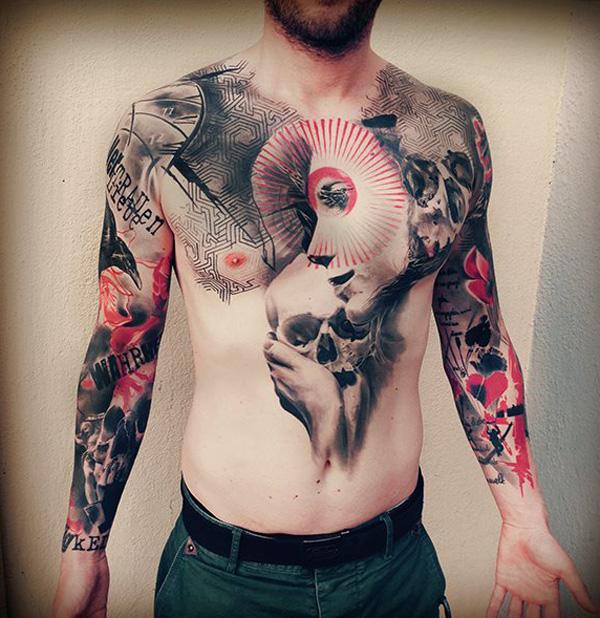
Trash polka is a tattoo style that was initially practiced by German artist Volker Merschky and Simone Pfaff in 1998. The style is the combination of realism and surrealism. By using chaotic elements such as brush strokes, splatteres, it transmits mixed feelings and stories.
20. Tribal
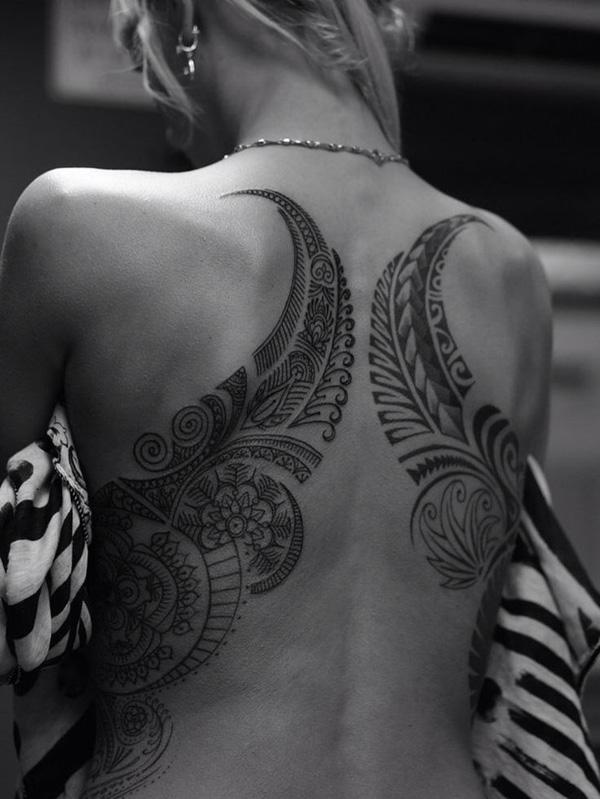
Tribal tattoo is the style of Polynesian tattoos and their modern variations. Polynesian tattoos played important role in the tattoo history. The origin of the English word ‘tattoo’ actually came from the Tahitian word ‘tatau’. With the spreading of the indigenous body art, the wild and exotic style attracts the interest of more and more people.
21. Watercolor
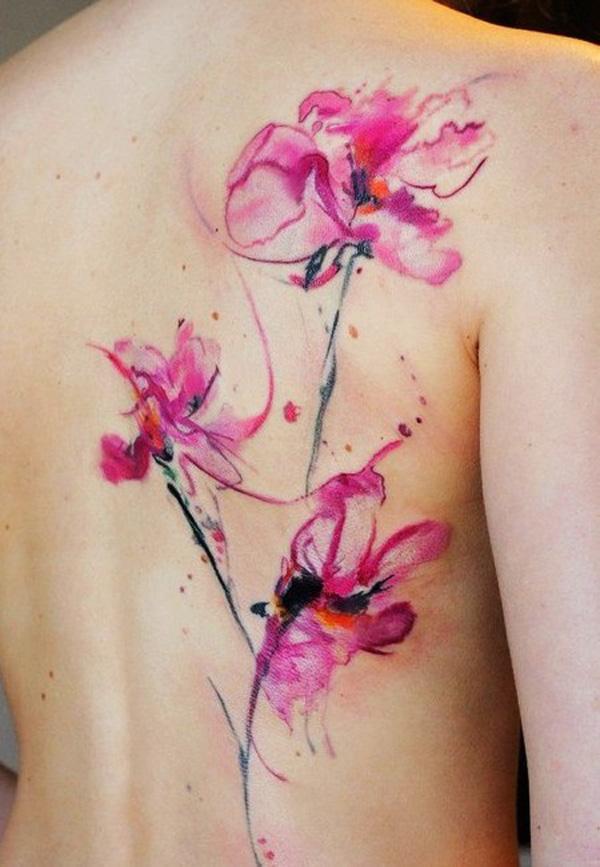
Watercolor tattoo emulates the art of watercolor paintings. In contrast to conventional tattoos, it’s not dependent on black outlines. By using special techniques, the artist creates the style that draws attention to the artistic appear of floating colors.
